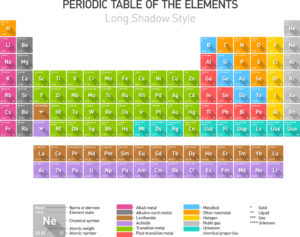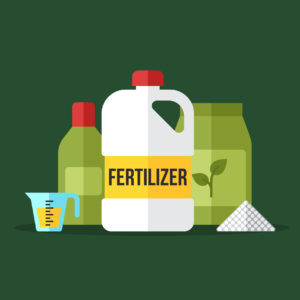
Fertile Grounds
There are so many options available for fertilizing your new hemp crop. Here are some thoughts that can help you make the best decisions when you choose.
Introduction: What do my hemp plants need?
Making sure that your hemp plants have the right nutrients at each phase of plant maturity is critical to the success of your crop. My December 2021 blog, Hemp Plant Nutrition – Germination Through Flowering, goes into detail about this and is worth a look if you haven’t already read it. Nutritional needs of hemp plants change as they grow, so making sure that you are applying the right fertilizers at the right time is important. Additionally, it’s vital that you monitor your soil’s pH levels and amend as needed. The soil’s pH impacts your crop’s ability to onboard nutrients. Too alkaline or acidic and your plants will not thrive. Hemp is a hungry crop – feed it well if you want good yields! Let’s review some of the fertilizer basics and consider some of the foundational decisions we make when purchasing fertilizer.

.
Macros vs. micros
The nutritional requirements of hemp do not change based on growing medium – their needs are independent of the growing medium and evolve over the life of the plant. In other words, whether you start seeds hydroponically, in soil-less mixture, or directly in soil, those seeds must derive the same kind of nutrients from the growing medium – however, the nutrient needs change predictably as the plant matures. The most important nutrients – the macros – are nitrogen, phosphorous, and potassium (NPK). If you give your plants nothing else, make sure to feed NPK in correct proportions based on your growing medium and the life stage of the crop. At the vegetative stage, we recommend adding magnesium, calcium, and sulfur in amounts based on what you have learned from soil testing. Small amounts of micronutrients such as zinc, manganese, iron, boron, chlorine, cobalt, copper, molybdenum, and silicon can also help your crop to thrive. Understanding what nutrients hemp needs and what nutrients your plants CAN’T get from the soil is imperative when you select a fertilizer.

Dry vs. Liquid
Let’s start by saying that there is no right or wrong answer here. It really depends on your operation, workflow, and storage capacity. Space-saving dry fertilizers are lighter than their liquid counterparts. This means that they are easier to transport and store, and generally easier to handle in their 25-pound bags. Dry fertilizers can also be mixed with water to varying degrees of potency and typically have a longer shelf life than liquids. On the downside, they can be susceptible to caking, so you want to take steps to keep them in a cool, dark, dry storage area, especially if your climate is humid. And, of course, since you are the one doing the mixing, getting the ratios correct falls to you as opposed to the manufacturer. For convenience, liquid fertilizers have an important plus or two. Normally, they are premixed and can be applied easily without additional special equipment. Liquids are precisely mixed in production, removing any guesswork or variability. Packaging can be a challenge as not all containers are designed with easy storage in mind. Because the premixed liquid requires more volume than a dry concentrate, the liquid fertilizer will take up more storage space. It’s also considerably heavier, which means it takes more time and people power to move it around. As you consider your options, keep these factors in mind and consider what fertilizer properties work best for your business.
Organic vs. conventional
Like the “dry vs. liquid” debate, the organic vs. conventional fertilizer decision will pivot around your goals as a grower. If you are a certified organic grower, then you have already chosen your path. But if you’re not, there may still be some reasons organic products will appeal to you. Plant-based organics are naturally big on NPK and some micronutrients. They also have the benefit of improving soil and enhancing the plant’s health, which may mean you have less need for pesticides and herbicides. And while organic products usually cost more, if you shop carefully, you will find formulations that are up to twice as effective, thus requiring less product per application. Another consideration is the end use of your CBD hemp. CBD is ingested orally or topically, so taking a product to market that has fewer synthetic inputs may equate to better health for end users. All that said, conventional fertilizers offer the advantage of being highly standardized and extensively researched over decades, although they tend to not be formulated with added micronutrients. That equates to greater predictability and easier targeting for the grower. Unlike organics which usually must be converted by microorganisms before onboarding by the plant, synthetics are quickly and directly taken up. This could be vital to your crop’s success if it is stressed. Growers who use conventional fertilizer also need to be extra cautious about application management to prevent groundwater contamination, polluted runoff, and over-feeding.

Flexibility for the win
Convenience, cost, time, labor, storage capacity, local conditions, and environmental impacts are variables that you will weigh as you design the best possible fertilizer program for your enterprise. Keep in mind that your choices do not have to be black-and-white. You can conduct small–scale trials within your grow to test the results from different kinds of fertilizers. It’s also perfectly fine to use combinations of liquid/dry and organic/conventional throughout the season if that makes sense. And take note of different responses you see from different strains of seed. Start by gaining a fundamental grasp of the nutritional needs of your crop throughout its growing cycle. Then, measure the available nutrients in your soil through professional testing. These two first steps are the most critical; from there, you can successfully fine-tune how and when to get needed additional nutrients to your plants through fertilization.


Recent Comments